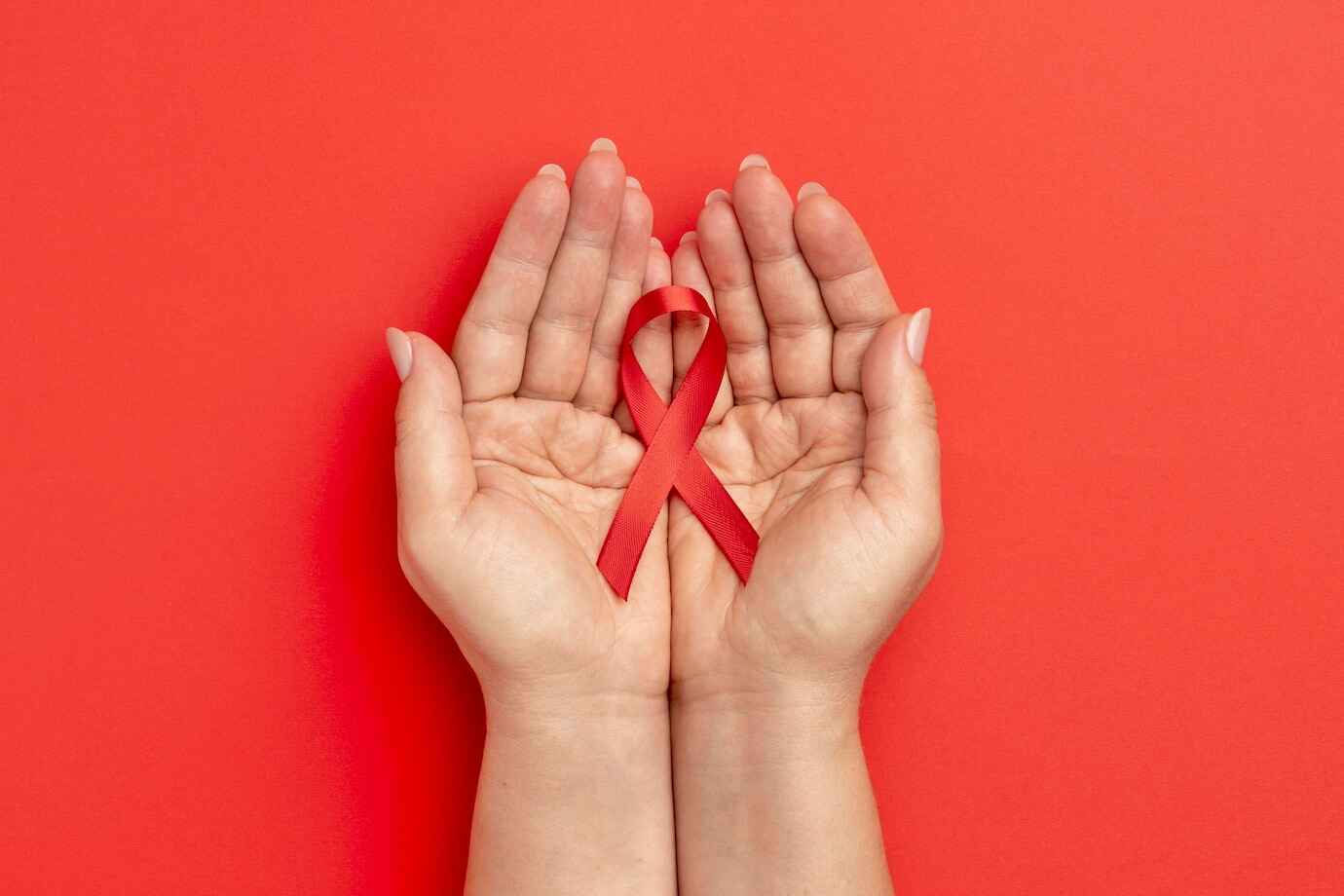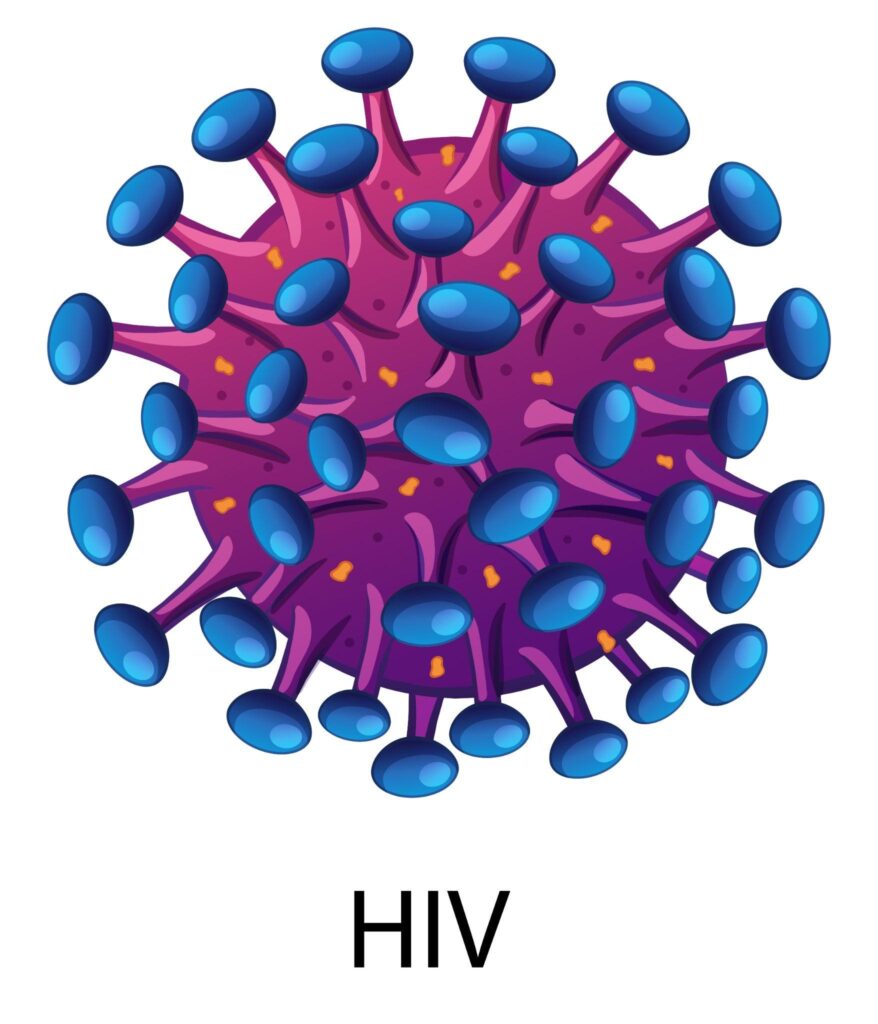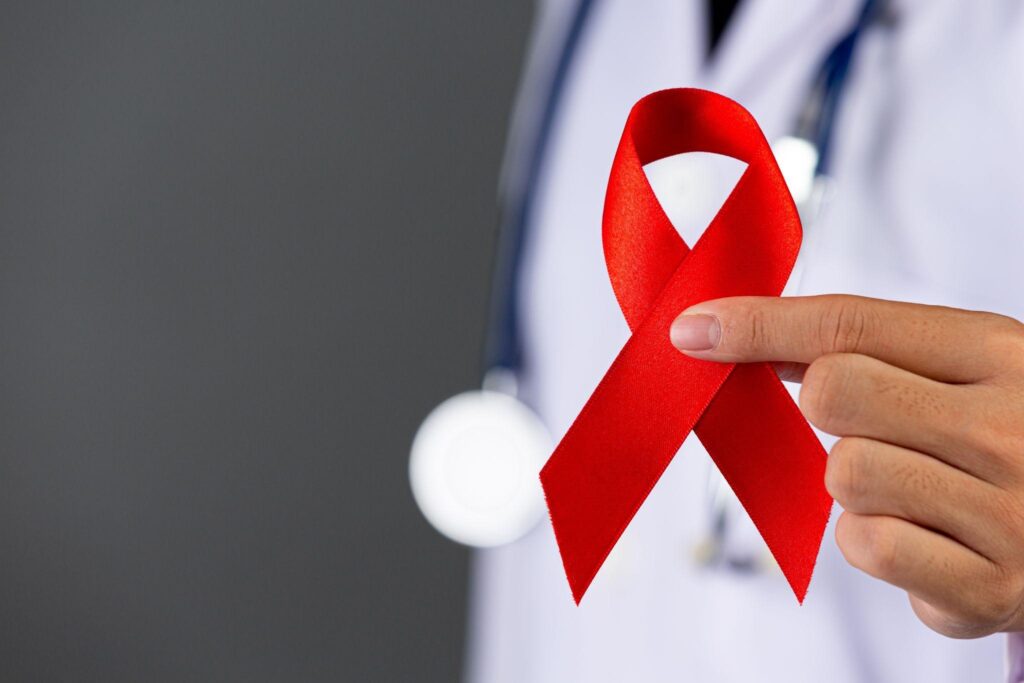Last updated on April 17th, 2025 at 11:38 am
 Treatment of AIDs – Medical interventions and therapies are used to manage and control HIV (Human Immunodeficiency Virus) infection and its progression to AIDS (Acquired Immunodeficiency Syndrome, in HIV AIDS treatment.
Treatment of AIDs – Medical interventions and therapies are used to manage and control HIV (Human Immunodeficiency Virus) infection and its progression to AIDS (Acquired Immunodeficiency Syndrome, in HIV AIDS treatment.
HIV, a virus that specifically targets CD4 cells (T cells) crucial for the body’s ability to fight off infections, attacks the immune system. If left untreated, HIV can lead to a weakened immune system, making individuals more susceptible to opportunistic infections and certain cancers, defining the condition as AIDS.
Treatment of AIDs
Antiretroviral therapy, or ART, remains the cornerstone of HIV/AIDS treatment. This approach involves using a combination of different medications to suppress the virus, allowing individuals with HIV to lead longer and healthier lives. Over the years, ART has seen significant improvements in both effectiveness and tolerability.
- Single-Pill Regimens: One of the most notable developments is the advent of single-pill regimens. Instead of taking multiple medications at different times, individuals can take a single pill daily, making adherence to the treatment regimen much more manageable.
- Fewer Side Effects: Modern ART regimens are associated with fewer side effects than earlier versions, which often cause discomfort and reduce the quality of life for those living with HIV. Improved formulations have reduced the risk of adverse reactions, making treatment more tolerable.
- Pre-Exposure Prophylaxis (PrEP): In addition to treatment for HIV-positive individuals, there are now preventive measures available. PrEP involves taking a daily pill to reduce the risk of contracting HIV, making it a vital tool in HIV prevention efforts.
- Post-Exposure Prophylaxis (PEP): PEP is a short-term treatment option for individuals who have been exposed to HIV. When taken promptly after potential exposure, it can significantly reduce the risk of infection.
Immune-Based Therapies
While antiretroviral therapy effectively controls HIV replication, it does not cure the virus. Researchers have been exploring immune-based therapies to complement existing treatments and potentially lead to a functional cure or sustained remission.
- Monoclonal Antibodies: Monoclonal antibodies have shown promise in suppressing HIV and enhancing the immune response. They can be used in conjunction with antiretroviral therapy to improve viral suppression.
- Therapeutic Vaccines: Research into therapeutic vaccines aims to train the immune system to control the virus without needing ongoing medication. While this field is still in its infancy, it holds great potential for the future.

Gene Therapy
Another groundbreaking area of HIV/AIDS research is gene therapy. Scientists are investigating gene-editing techniques such as CRISPR-Cas9 to modify the DNA of cells in a way that makes them resistant to HIV infection. While this approach is still experimental and faces significant challenges, it represents a promising avenue for a potential cure.
Read: HIV AIDS Treatment in Hindi
Latest HIV Treatment
The latest HIV treatments continue to build upon decades of research and innovation, offering hope for better outcomes and quality of life for individuals living with the virus. As of my last knowledge update in September 2021, here are some of the recent advancements in HIV treatment:
- Long-Acting Medications: Researchers have developed long-acting antiretroviral drugs that can be administered through injections, allowing for less frequent dosing. This reduces the burden of daily pill regimens and improves treatment adherence.
- Broadly Neutralizing Antibodies (bNAbs): bNAbs are a promising addition to HIV treatment. They can be infused periodically and have shown the potential to control the virus more effectively, even in cases of drug resistance.
- Two-Drug Regimens: Simplified two-drug regimens are being explored as alternatives to the standard three-drug therapies. These regimens may offer similar viral suppression with potentially fewer side effects.
- Personalized Medicine: Tailoring HIV treatment to an individual’s specific genetic and viral characteristics is becoming more common. This personalized approach enhances treatment effectiveness and minimizes side effects.
- Gene Editing and Cure Research: Cutting-edge gene-editing techniques, such as CRISPR-Cas9, are being investigated for their potential to eradicate HIV from the body, offering the possibility of a functional cure.

It’s important to note that while these advancements are promising, HIV remains a complex virus, and a cure has not yet been achieved. Regular medical supervision and adherence to prescribed treatment plans remain crucial for individuals living with HIV. Additionally, it’s advisable to consult with a healthcare provider for the most up-to-date information on HIV treatment as new developments may have emerged since my last update.
HIV After 5 Years Without Treatment
Without treatment, HIV (Human Immunodeficiency Virus) can significantly weaken the immune system over five years. Typically, in this timeframe, HIV progresses through various stages, leading to a lower count of CD4 cells, vital for immune function.
Without intervention, individuals may develop symptoms, such as frequent infections, weight loss, fatigue, and night sweats. Over time, HIV can advance to AIDS (Acquired Immunodeficiency Syndrome), making the person highly susceptible to life-threatening infections and cancers.
Regular medical monitoring and antiretroviral treatment are crucial to slow or prevent this progression, maintaining better health and extending life expectancy for those with HIV.
> Consult a Doctor and Medkart will help you Order Medicines Online
Conclusion
The landscape of HIV/AIDS treatments has evolved significantly over the years, offering new hope and improved outcomes for individuals living with the virus. From more convenient antiretroviral therapies to innovative immune-based treatments and gene-editing approaches, the future of HIV/AIDS management looks promising.
However, challenges remain, including ensuring equitable access to these treatments and continuing research efforts to find a cure. With continued dedication, collaboration, and investment in research and healthcare infrastructure, we can look forward to a future where HIV/AIDS is no longer a global pandemic but a manageable and ultimately eradicated disease.
Do Generic Medicines work the same?
Regulatory agencies require generic medicines to be bioequivalent to their brand-name counterparts, meaning they have the same active ingredients and meet the same quality and safety standards. As a result, they work the same way as brand-name drugs and are equally effective in treating medical conditions.
The main difference is the cost, as generics are typically more affordable due to lower research and development expenses. Choosing generics can be a cost-effective way to access high-quality medications without compromising on efficacy.
Read: What are Generic Medicines?
FAQs on HIV AIDS Treatment
Q1. What is HIV AIDS treatment?
Treatments for HIV/AIDS are known as antiretroviral therapy (ART). It involves a combination of medications that suppress HIV, allowing individuals to lead healthier lives. It aims to reduce the viral load, boost the immune system, and prevent transmission. While it doesn’t cure HIV, effective treatment enables long-term viral control.
Q2. What is the longest HIV survivor without treatment?
Loreen Willenberg, who has been living with HIV for over 30 years without the need for antiretroviral therapy, is believed to be the longest-recorded HIV survivor without treatment.
Q3. Can HIV/AIDS be cured with current treatments?
No, current treatments cannot cure HIV/AIDS, but they can effectively control the virus, allowing individuals to lead healthy lives with suppressed viral loads.
Q4. Are there any side effects associated with HIV/AIDS treatments?
Yes, but modern regimens are designed to minimize side effects, some HIV/AIDS medications can have them. Regular monitoring and communication with healthcare providers help manage side effects effectively.
Related Links:
